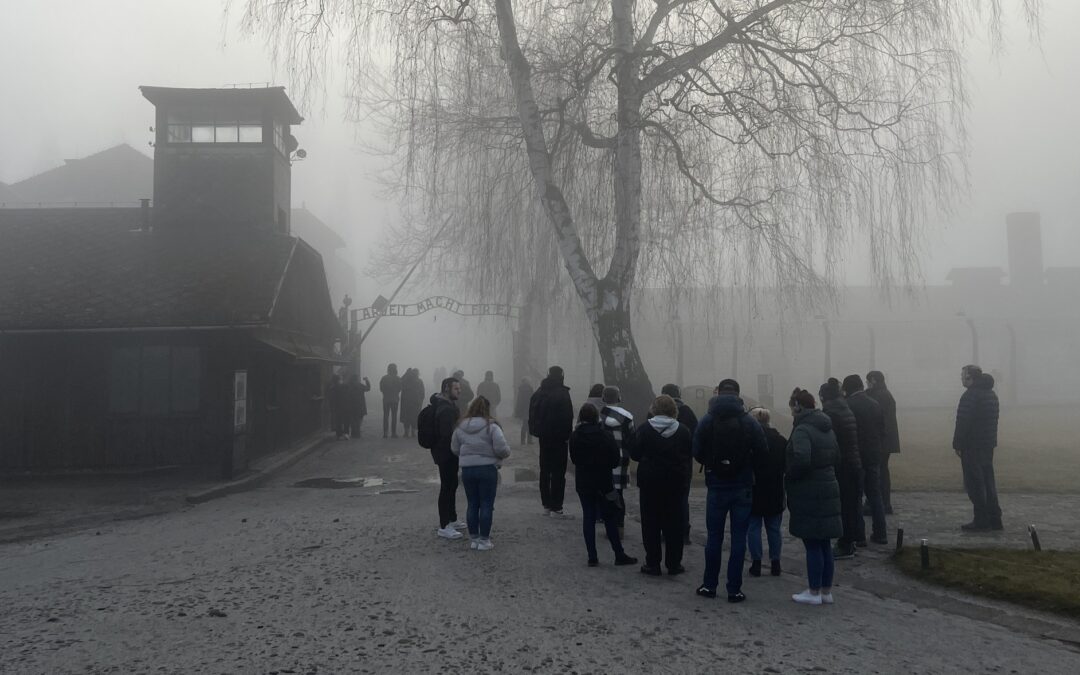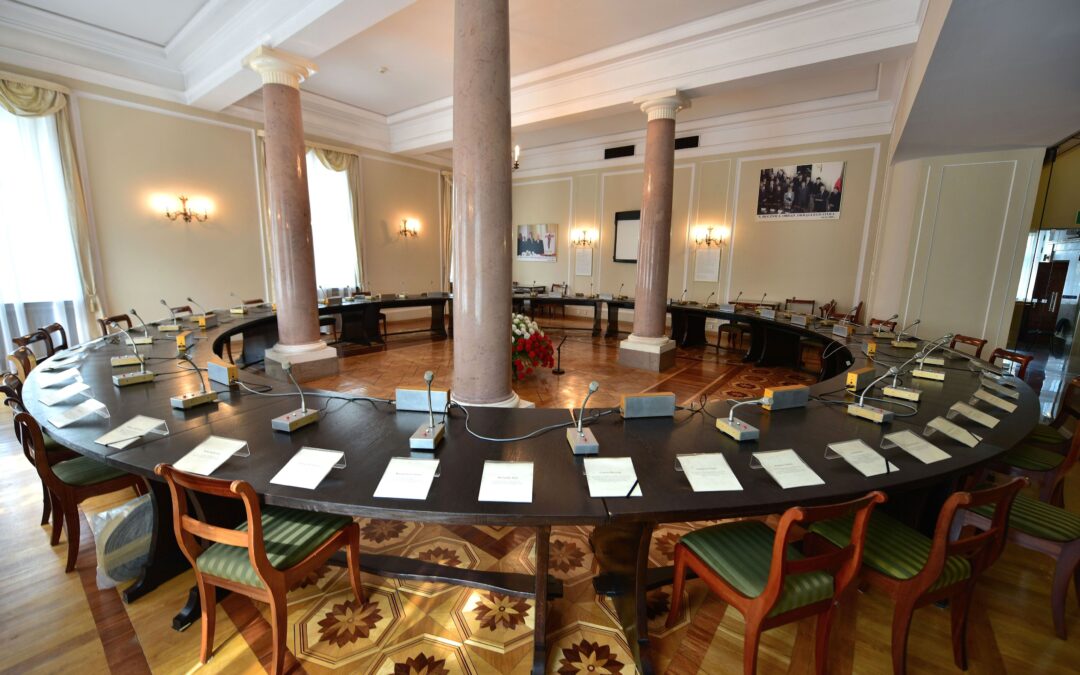Keep our news free from ads and paywalls by making a donation to support our work!

Notes from Poland is run by a small editorial team and is published by an independent, non-profit foundation that is funded through donations from our readers. We cannot do what we do without your support.
The Auschwitz Museum, which is responsible for managing the site of the former German-Nazi camp, has announced new restrictions on entry amid a surge in visitor numbers and a rise in unscrupulous private firms bringing large numbers of people without pre-booked tickets.
From 1 May 2025, people wishing to visit the former camp without a guide will be required to book an entry pass online between seven and 90 days in advance. Until now, such visitors were able to simply turn up at the museum on the day and queue for an entry pass, which is free of charge.
Due to the growing number of visitors, starting in May, some entry regulations to the Memorial will change. It will primarily affect individual visitors touring without a guide.
Free entry passes for individual visitors without a guide will be available exclusively online at the… pic.twitter.com/QgneKg9G9O
— Auschwitz Memorial (@AuschwitzMuseum) April 23, 2025
The museum’s deputy director, Andrzej Kacorzyk, said that they have been “observing a dynamic increase in the number of visitors” so far this year. “Attendance is approaching, and sometimes even exceeding, that of the analogous period of the record-breaking year 2019.”
In 2019, the last year before the pandemic, a record 2.32 million people visited the Auschwitz Museum. The numbers then plummeted amid Covid-related restrictions and a broader decline in tourism, but have been gradually recovering. In 2024, the museum had 1.83 million visitors.
The museum’s spokesman, Bartosz Bartyzel, notes that as well as the large overall number of visitors, a particular problem is caused by “visitors without any reservation being brought to the museum by various companies for a high fee, many times higher than the cost of traveling by train or bus on their own”.
A record 2.3 million people visited Auschwitz last year, helping the @AuschwitzMuseum in its educational mission but also raising challenges as the former camp increasingly becomes a destination for tourists https://t.co/45g7yQHckw
— Notes from Poland 🇵🇱 (@notesfrompoland) January 13, 2020
“These people, in groups of even several dozen, are added to the queue for free entry cards,” said Bartyzel. “When the entry cards run out, these companies blame the museum for the inability to enter, which results in numerous complaints from visitors addressed directly to us.”
In fact, notes Kacorzyk, the museum, which is a Polish state institution, “does not cooperate with any external entities regarding reservations and therefore is not responsible for cancelled reservations made on other websites”.
As a result, the museum has changed its rules to bar individual visitors from turning up without a reservation and gaining access to the former camp. Instead, they must now book online in advance.
This is a final appeal for our emergency campaign to save Notes from Poland.
Next week, we may lose the major grant that sustains our work.
If you value the service we provide, please click below and make a donation to help it continue https://t.co/0gVkMlaA0W
— Notes from Poland 🇵🇱 (@notesfrompoland) April 22, 2025
Moreover, during the peak season of May to September, people who have booked such free individual entry passes can only enter the museum after 5 p.m.
“The introduced changes primarily serve to ensure the comfort and safety of people entering the museum and visiting the historic area,” says Kacorzyk.
However, people without a booking can still visit the camp if they join a guided group tour, which, unlike the free individual entry passes, must be paid for upon arrival. Tours can also be booked in advance. Last year, around 90% of visitors to the museum toured the former camp with a guide.
On the 80th anniversary of the liberation of Auschwitz, we look at the extraordinary story of Anna Odi, who has lived her entire life in the grounds of the former concentration camp as the daughter of survivors who helped establish the @AuschwitzMuseum https://t.co/d2enYJRjMk
— Notes from Poland 🇵🇱 (@notesfrompoland) January 27, 2025
Auschwitz was originally set up by Nazi Germany in occupied Poland in 1940 as a camp to house Polish “political” prisoners, before later becoming primarily a site for the murder of Jews.
At least 1.3 million victims were transported there, with at least 1.1 million of them killed at the camp. Around one million of those victims were Jews, most of whom were murdered in gas chambers immediately after their arrival. The second largest group of victims were ethnic Poles.
The camp was liberated by the advancing Soviet Red Army in January 1945 and, two years later, following the end of the war, a Polish state museum was established there.
Among the 1.83 million visitors to the Auschwitz Museum in 2024, the largest national group, accounting for around a quarter of visits, was Poles. The next largest groups were from the UK, Spain, Italy and Germany.
The head of the @AuschwitzMuseum's research centre has debunked material released by Russia promoting the narrative that Poles were perpetrators of atrocities at the camp.
He notes that the files published by the FSB contain numerous, glaring inaccuracies https://t.co/1CoVKks2bc
— Notes from Poland 🇵🇱 (@notesfrompoland) February 15, 2025

Notes from Poland is run by a small editorial team and published by an independent, non-profit foundation that is funded through donations from our readers. We cannot do what we do without your support.
Main image credit: Auschwitz Museum

Daniel Tilles is editor-in-chief of Notes from Poland. He has written on Polish affairs for a wide range of publications, including Foreign Policy, POLITICO Europe, EUobserver and Dziennik Gazeta Prawna.



















